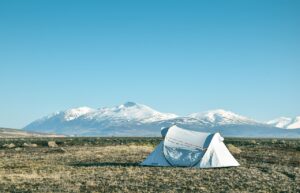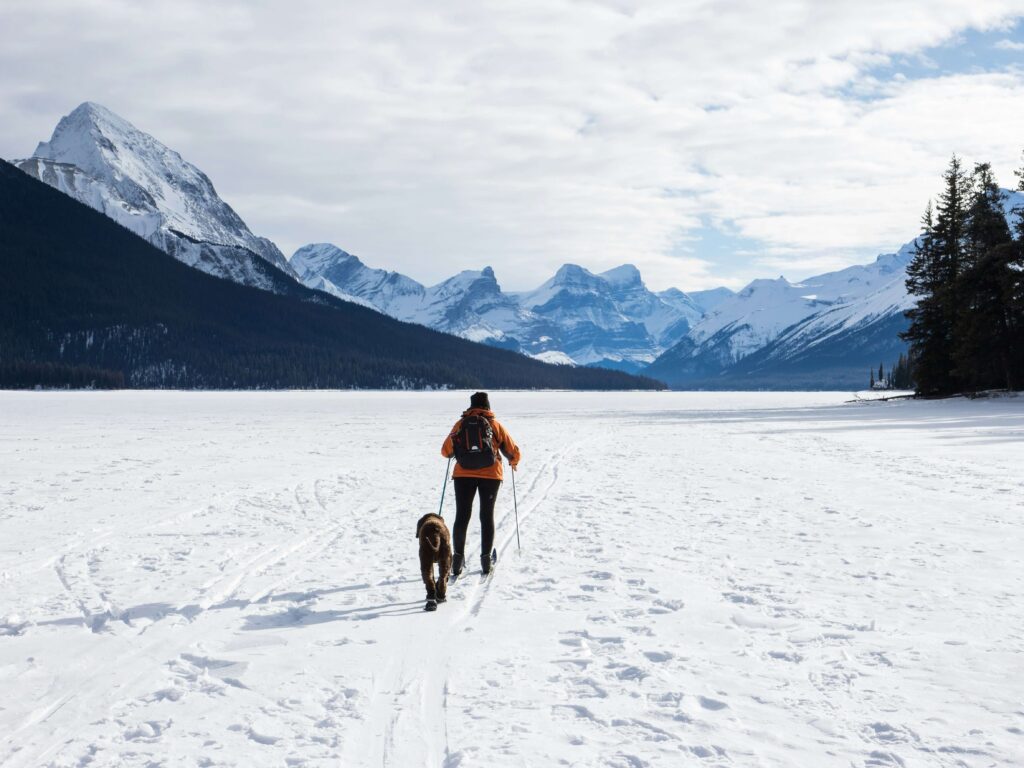Camping in Winter Conditions: An Adventurer’s Guide
Winter camping can seem challenging, especially if you’re used to summer trips and long days. However, winter camping has its unique charm— the silence of a snowy forest, crystal-clear nights, and a feeling of connection to nature. For many adventure lovers, it’s the pinnacle of exploring the outdoors.
Before you pack your tent and head out, it’s crucial to understand the specific challenges that winter camping brings. Cold temperatures and shorter days require a different approach and thorough preparation.In this guide, read about gear, preparations, safety measures, and helpful tricks to ensure that your winter camping adventure is safe, warm, and unforgettable.
The Right Gear is Key to Success
Camping in winter conditions requires specific gear that can withstand low temperatures, moisture, and snow. Using equipment designed for summer conditions can lead to an uncomfortable and dangerous experience.
Tent
Camping in winter conditions requires specific gear that can withstand low temperatures, moisture, and snow. Using equipment designed for summer conditions can lead to an uncomfortable and dangerous experience.
Sleeping Bag and Insulation Layers
A winter sleeping bag is essential. Ideally, you should choose a bag rated for temperatures lower than what you expect outside. For instance, if you anticipate nights at -10°C, opt for a bag that can handle temperatures down to -15°C or lower. Look for sleeping bags marked for low temperatures, like those offered by Backcountry. Bags with extra insulation provide protection from the cold, and Amazon has a wide range of options to fit your budget. If you want top-quality, Patagonia and The North Face have excellent choices for winter bags and warm jackets perfect for these conditions.
Besides the sleeping bag, an insulating sleeping pad is necessary to protect you from the cold coming from the ground. It’s recommended to use two pads: one foam pad for insulation and one inflatable for comfort. This will ensure better sleep and keep you warm at night.


Clothing: Layering
- Layering is essential for winter camping. You should have three main layers:
- Base Layer – This layer should wick moisture away from your skin. Choose materials like merino wool or synthetic fabrics designed to keep you warm and dry.
- Mid Layer – This layer provides insulation. A fleece jacket or sweater, or a lightweight puffy jacket, is a good choice.
- Outer Layer – This is your protection against wind, snow, and rain. Choose jackets and pants that are waterproof and windproof but also allow moisture to escape.
It’s also crucial to wear quality winter socks, gloves, and a hat. More than 60% of body heat can be lost through the head, so wearing a warm hat is necessary. The North Face and Patagonia offer excellent options for jackets, pants, gloves, and hats specifically designed for winter adventures.
Choosing the Ideal Location for Winter Camping
When planning a camping location, winter requires more attention than summer. It’s vital to select a site sheltered from strong winds and far from avalanche-prone areas.
Choosing a Tent Spot
Avoid camping at the top of hills or open meadows where winds can be strong and exhausting. Look for sheltered spots like forests that can block the wind and provide better insulation. Also, camp on flat ground to ensure your tent stands stable.
If you’re camping in mountainous areas, be aware of avalanche risks. Check the avalanche forecast and camp far from steep snow-covered slopes. Always set up your tent on stable snow or ground, and avoid camping under overhanging snow or icy cliffs.

Setting Up Camp
Before setting up your tent, compact the snow where you plan to camp. This will prevent the snow from melting underneath you and creating cold air pockets. Use a snow shovel to create a flat, stable surface.
Nutrition and Cooking in the Cold
Preparing food while winter camping requires a special approach. The cold affects your body, making it burn more calories to keep warm, meaning you’ll want to eat more than usual.
Cooking in Winter Conditions
Use stoves designed for cold weather. Gas canisters can become ineffective at low temperatures, so it’s good to use gasoline or multifuel stoves that are more stable in winter conditions.
Cook simple, high-calorie meals. Winter camping isn’t the time for gourmet meals—opt for simple foods like pasta, rice, dehydrated meals, soups, and energy bars. Bring plenty of warm drinks like tea or coffee, and always have a thermos of hot water handy.

Hydration
Even if you don’t feel as thirsty in the cold as in summer, staying hydrated is crucial. Carry water in insulated bottles or use a thermos to keep it liquid. Watch for signs of dehydration, as dry winter air can quickly deplete your moisture levels.

Safety in Winter Conditions
Winter camping carries certain risks, but with proper preparation, these risks can be minimized.
Avalanches
If you’re camping in mountainous areas, avalanches are a serious risk. Always check the avalanche forecast before heading out and never camp or plan activities near avalanche-prone slopes. If you’re in areas prone to avalanches, always carry essential avalanche gear—a beacon, probe, and shovel—and learn how to use them.
Hypothermia and Frostbite
Hypothermia can happen faster than you think, especially if you’re not layering properly or if you get wet. If you feel shivering, sluggishness, or confusion, get to warmth immediately. Staying dry is key—always have spare clothing and footwear so you can change if you get wet.
Additional Activities to Keep You Warm and Entertained
Winter camping doesn’t mean you’re limited to staying in your tent. Winter sports like skiing and snowboarding can make your camping trip more dynamic. Many camping centers near popular ski destinations offer a mix of outdoor activities. For example, Backcountry provides equipment for skiing and snowshoeing, perfect for your camping adventure.
Snow Hiking
Hiking in winter can be a beautiful experience, but it requires special gear, like snowshoes or crampons for stability on snow and ice. Many winter camps offer groomed trails suitable for walking or hiking. Backcountry offers skiing gear and snowshoes, which are the perfect addition to your camping trip.

Skiing or Sledding
If you’re camping near a ski resort or hill, bring sleds or skis to take advantage of winter sports. Sledding is a great family activity, and snowshoeing can be a perfect way to explore the nature around you.

Safety and Preparations
Before heading out on a winter camping trip, it’s essential to have a solid plan in place. Travel insurance is something many forget, but it’s crucial, especially in winter conditions. I recommend World Nomads insurance, as it covers risks related to winter sports and camping.
In addition to insurance, check the weather forecast and make sure you’re familiar with the terrain. A good guide or map can save you a lot of trouble, and downloading hiking and survival audiobooks from Audible can be a helpful addition to your preparations.
Winter Camping Tips
- Tent and Sleeping Area Insulation – Place an insulation layer under your tent and sleeping pad to prevent heat loss from the ground.
- Proper Nutrition – Consume enough calories, as your body burns more energy in the cold.
- Warm Drinks – Always carry a thermos with warm drinks to stay hydrated and warm.
- Winter Hiking – If you enjoy winter walks, invest in good hiking boots and snowshoes. REI and Backcountry have excellent options.
- Lighting – To make the long winter nights more comfortable, bring LED lanterns that last long and brighten up your tent. Snow Peak is known for its quality lighting solutions.
- Accommodation Options – If you prefer the comfort of warm accommodation after your outdoor adventures, find the best hotels and cabins near your favorite winter destinations. Search for accommodation on Booking.com and book in advance to secure a cozy stay after a day out in the cold.
Sign up for my newsletter to receive the latest travel tips and offers, and don’t forget to share your experience with me!


